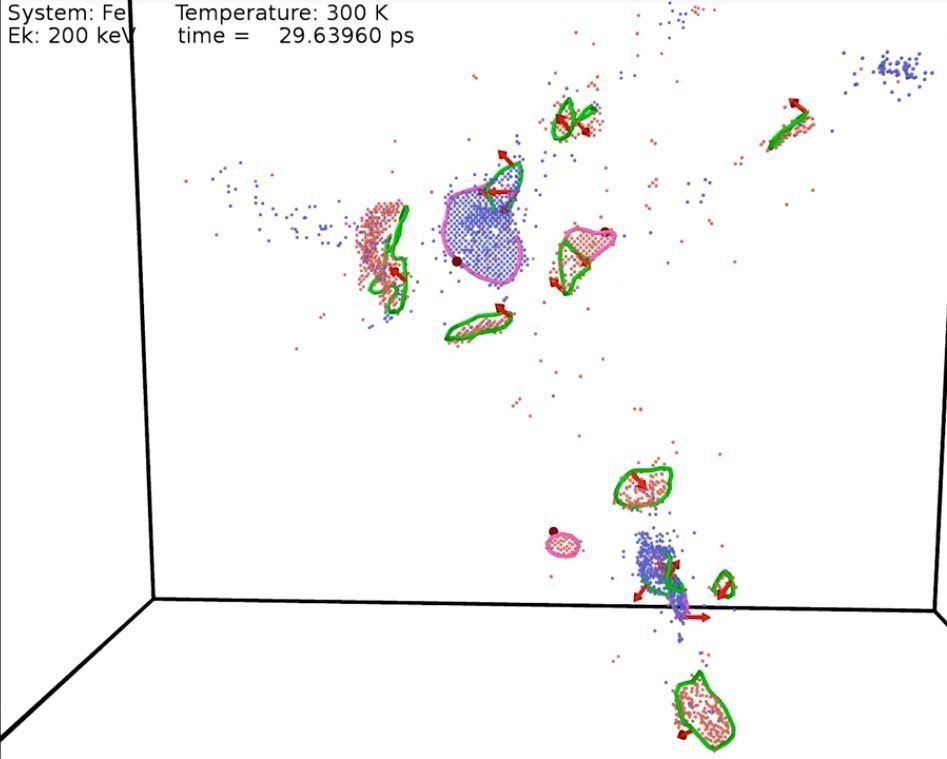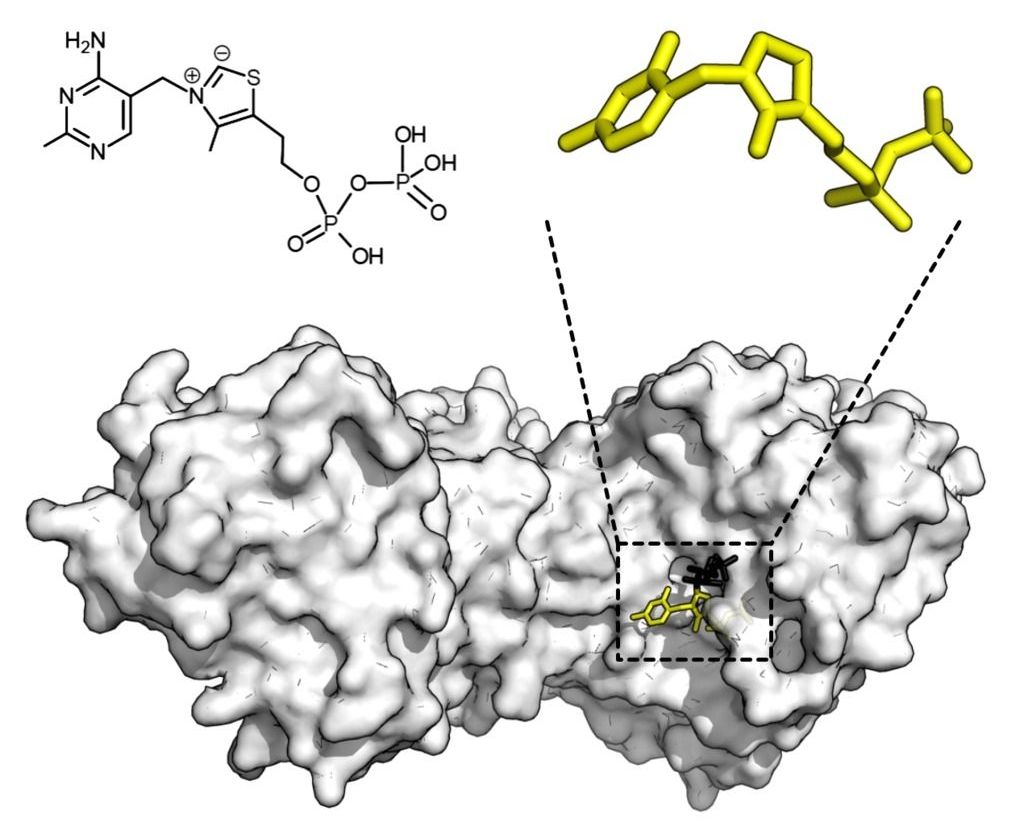Page 9305
Nov 17, 2018
Nitrogen-Based Life Might Swim On Saturn’s Largest Moon
Posted by Genevieve Klien in category: alien life
Researchers at Cornell University theorize life might exist on Saturn’s largest moon as nitrogen-based organisms.
SHOW TRANSCRIPT
Here’s a theory for finding extraterrestrial life: look for stuff that doesn’t resemble organisms on Earth.
Continue reading “Nitrogen-Based Life Might Swim On Saturn’s Largest Moon” »
Nov 17, 2018
Harvard Researchers Identify Which Diet Burns More Calories
Posted by Genevieve Klien in category: food
Nov 17, 2018
A new lead on a 50-year-old radiation damage mystery
Posted by Genevieve Klien in categories: nuclear energy, particle physics
For half a century, researchers have seen loops of displaced atoms appearing inside nuclear reactor steel after exposure to radiation, but no one could work out how.
Nov 17, 2018
Infinite-dimensional symmetry opens up possibility of a new physics—and new particles
Posted by Genevieve Klien in category: particle physics
The symmetries that govern the world of elementary particles at the most elementary level could be radically different from what has so far been thought. This surprising conclusion emerges from new work published by theoreticians from Warsaw and Potsdam. The scheme they posit unifies all the forces of nature in a way that is consistent with existing observations and anticipates the existence of new particles with unusual properties that may even be present in our close environs.
Nov 17, 2018
Virgin Is Lending Its Name to a High-Speed Train Line in Florida
Posted by Genevieve Klien in categories: futurism, transportation
Richard Branson, the British billionaire who wants to transform air travel with supersonic jets, has put his sights on something decidedly more down to Earth: a passenger railroad.
Branson has agreed to make a small investment and lend the Virgin brand to Fortress Investment Group’s Florida railroad, the first privately-funded intercity passenger train to be built in the U.S. in more than a century.
The private-equity company’s Brightline, which currently operates high-speed service between Miami, Fort Lauderdale and West Palm Beach, will rename itself Virgin Trains USA this month and use the brand and Virgin’s “marketing expertise” for existing and future developments, the company said Friday in a statement provided to Bloomberg News.
Continue reading “Virgin Is Lending Its Name to a High-Speed Train Line in Florida” »
Nov 17, 2018
Xiaomi made a 150-inch $2,000 laser projector exclusively available at Walmart
Posted by Genevieve Klien in categories: mobile phones, robotics/AI
Xiaomi has a couple of new products out in Walmart and gave press the rundown today at an event in New York City. The first is a 150-inch laser projector going for $1,999.99 at Walmart doubles up as a television with Android TV. It may seem overpriced for what it is, but it also marks one of Xiaomi’s infrequent expansions into American offerings.
There are a couple of things to break down here, namely that projector is oddly expensive for a 1920 × 1080p screen. Xiaomi says it has no concrete plans to bring a 4K version to the US, and that this is the same model it’s sold in China. You could have found cheaper 1080p projectors back in 2016.
Still, the laser projector has a number of positives including an ultra-short throw, so it can be placed 20 inches from the wall and still display a bright, colorful image, in contrast with other projectors that might need to be placed at the back of a room and show a more faded image. There’s also a detector on top of the projector so if you get too close to the laser, the projector will shut off its light automatically to prevent you from damaging your eyes. The device also comes with a corresponding remote control with which you can summon Google Assistant.
Continue reading “Xiaomi made a 150-inch $2,000 laser projector exclusively available at Walmart” »
Nov 17, 2018
How blasting worms into space could help slow down the ageing process
Posted by Genevieve Klien in categories: biotech/medical, government, life extension, space
A tiny transparent worm could be the key to finding out how to stop the frailty and ill health which often comes with old age.
British scientists are sending tens of thousands of worms into space in a government backed project to see if two drugs can prevent or slow down muscle wasting brought on by microgravity.
In space, the 1mm long c-elegans worms have nothing to push against to maintain their muscle mass and so quickly start losing strength, mirroring the effect experienced by elderly people back on Earth or those with conditions like muscular dystrophy.
Continue reading “How blasting worms into space could help slow down the ageing process” »
Nov 17, 2018
Bizarre Microbes Represent a Major New Branch on the Evolutionary Family Tree
Posted by Genevieve Klien in categories: biological, genetics
Canadian scientists have identified microscopic creatures that are so unlike anything seen before, they had to create an entirely new branch on the evolutionary tree of life to slot them in.
A new paper published this week in Nature offers the first genetic analysis of hemimastigotes—a rare and poorly understood group of single-celled microorganisms. Biologists have known about these wee beasties for well over a century, but only now can hemimastigotes be officially slotted into the evolutionary tree of life, a process more formally known as phylogeny. And by doing so, scientists have stumbled upon a completely new branch on the tree of life—one dating back billions of years.
Nov 17, 2018
AI heralds new frontiers for predicting enzyme activity
Posted by Genevieve Klien in categories: biological, chemistry, engineering, robotics/AI
Researchers from the Departments of Chemistry and Engineering Science at the University of Oxford have found a general way of predicting enzyme activity. Enzymes are the protein catalysts that perform most of the key functions in Biology. Published in Nature Chemical Biology, the researchers’ novel AI approach is based on the enzyme’s sequence, together with the screening of a defined ‘training set’ of substrates and the right chemical parameters to define them.


















